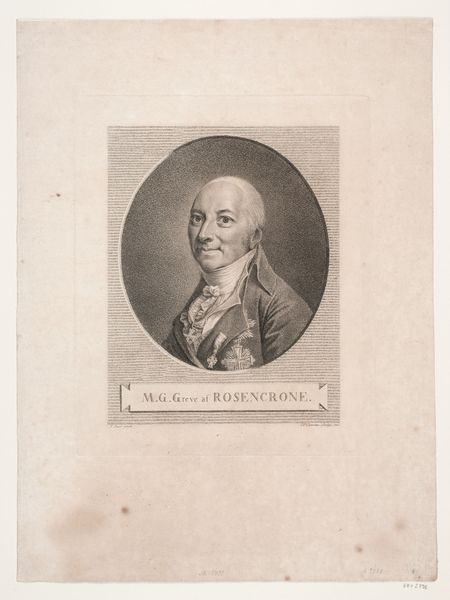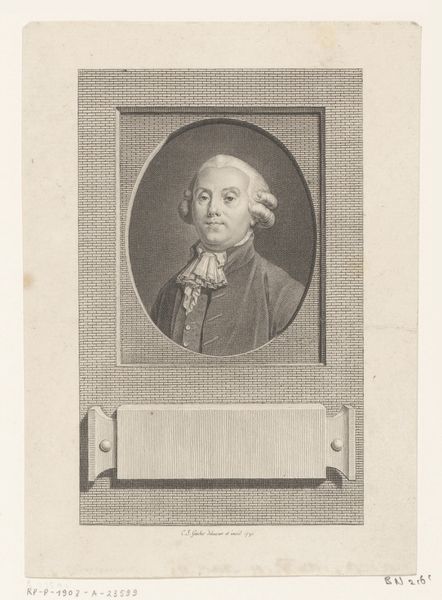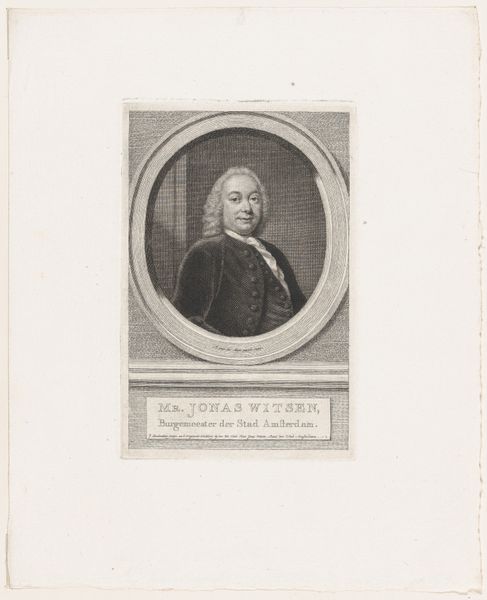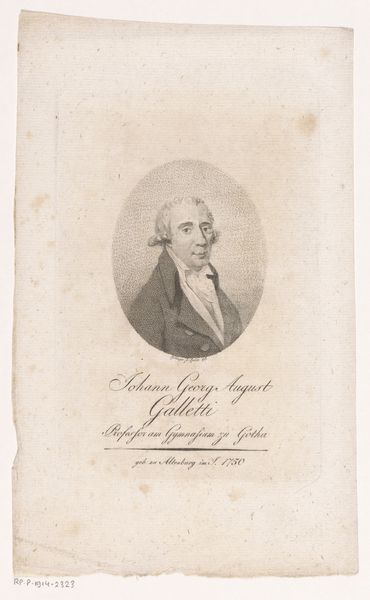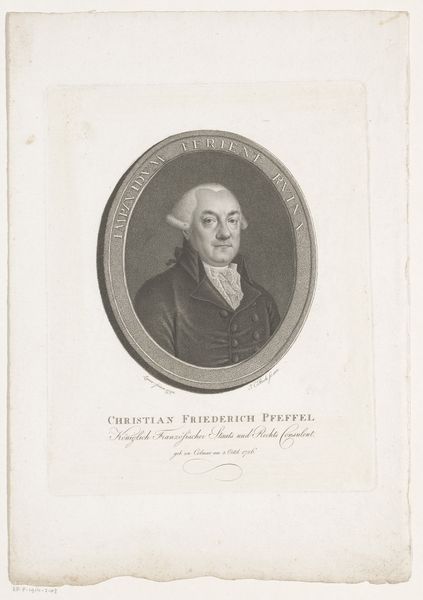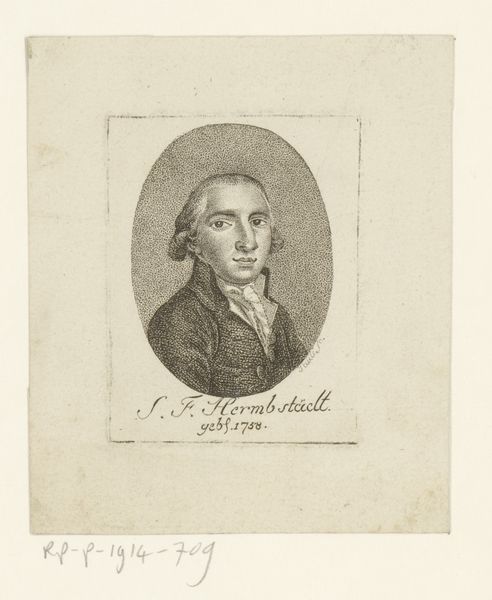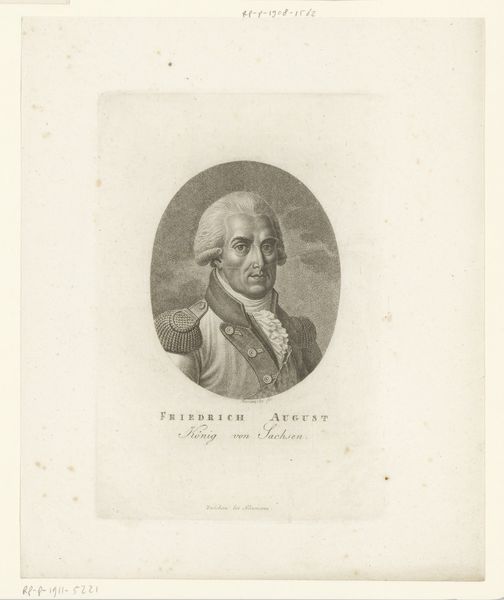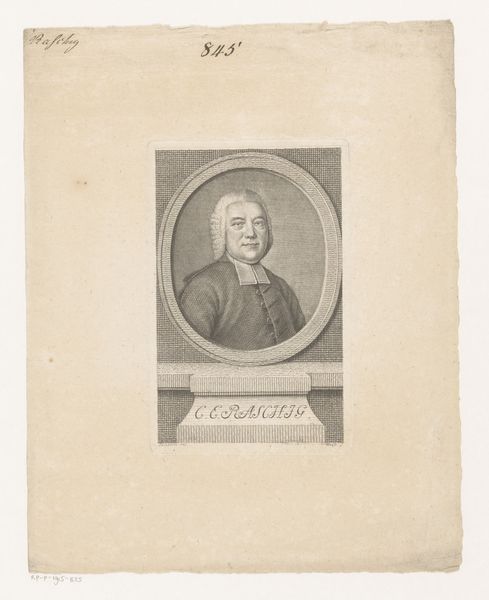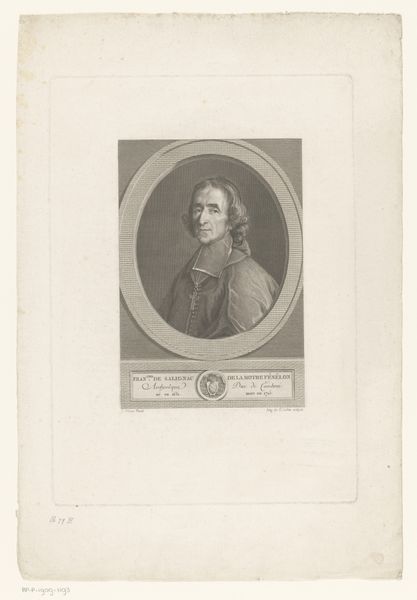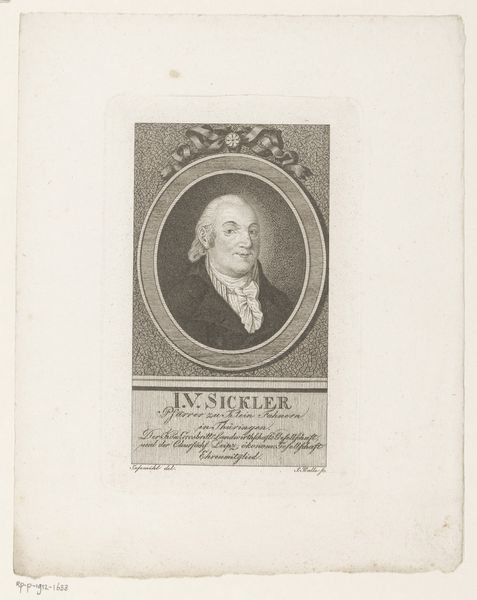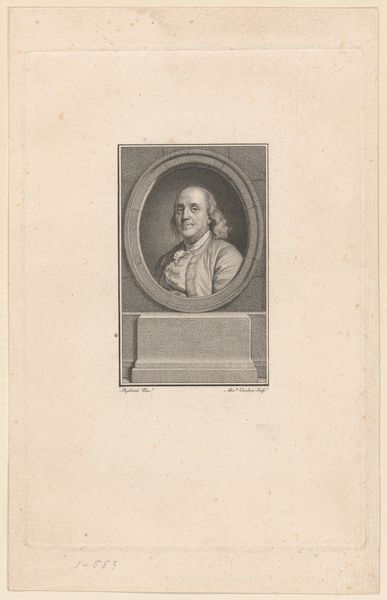
drawing, print, engraving
#
portrait
#
drawing
#
neoclacissism
# print
#
history-painting
#
engraving
Dimensions: Plate: 6 1/2 × 4 5/16 in. (16.5 × 11 cm) Sheet: 7 3/4 × 4 5/8 in. (19.7 × 11.8 cm)
Copyright: Public Domain
Editor: This is Pierre Alexandre Tardieu's 1798 engraving, "Benjamin Franklin," currently residing at the Met. It strikes me as a very formal, almost austere portrait, typical of neoclassical style. What do you see in this image, looking at it from a symbolic perspective? Curator: Well, portraits, especially engravings like this one, were incredibly important for shaping public memory. What symbols or attributes does Franklin carry that create his iconic status, even today? Look closely at how he is framed within the oval. What feelings does the composition inspire? Editor: The oval makes him seem… contained, almost like a cameo. And the label beneath displaying his name feels very deliberate, enshrining him, if that makes sense. Curator: Precisely! And consider what Franklin represented to people in the late 18th century – enlightenment, reason, revolution. Are these qualities palpable in the image? Where are the signs of it? Consider what's missing, as well. Is there any evidence of political agitation? Or is he sanitized for broader appeal? Editor: I don't see any sign of revolution, really. He looks very composed, even wise, but definitely not like a radical. It’s as if the engraver tried to capture something timeless in him. He's more than just a person; he's an ideal. Curator: Indeed. Tardieu crafted an image that transcended the man, becoming a potent symbol of American ideals. This reminds us that images carry so much psychological and cultural weight – sometimes deliberately. Editor: I hadn't thought about how much intention went into creating a symbol, but this makes total sense. Seeing it as a designed image helps a lot.
Comments
No comments
Be the first to comment and join the conversation on the ultimate creative platform.

